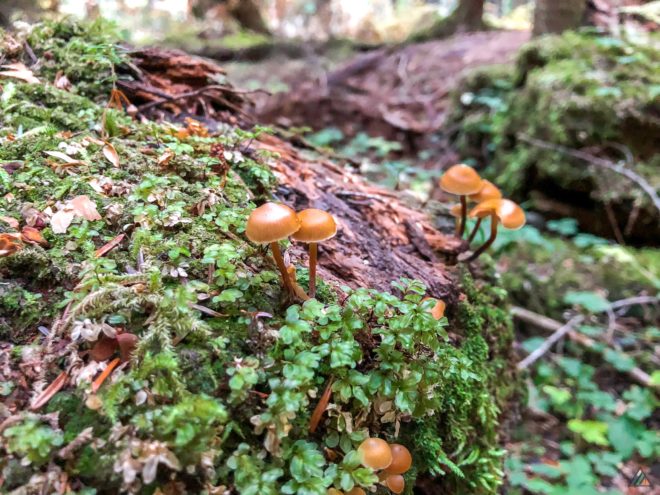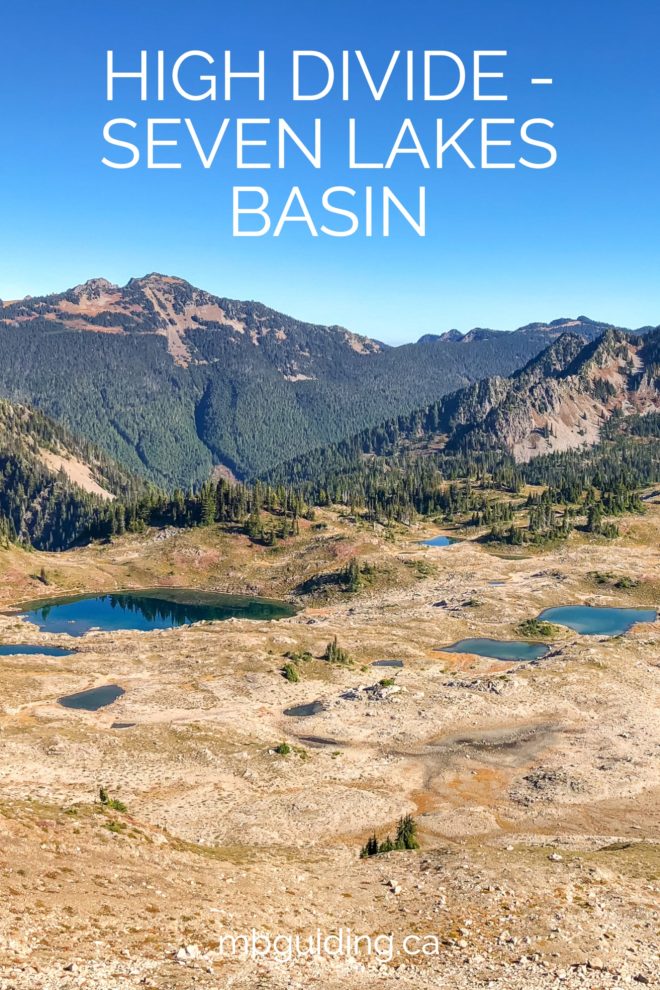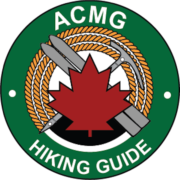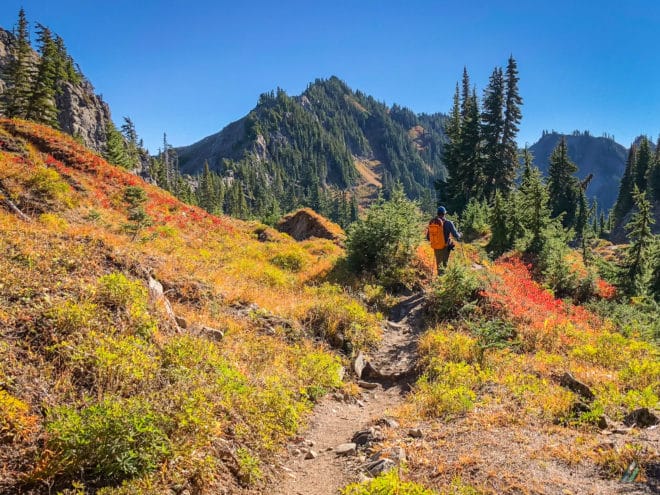
The High Divide – Seven Lakes Basin Loop provides some of the most spectacular views in Olympic National Park.
The main clockwise access is the Sol Duc River Trail (also known as the Soleduck Trail). The route starts in a gorgeous old-growth rain forest, then ascends through subalpine meadow and montane forest to a grand subalpine lake basin. The seven lakes (plus Lake Number 8 and Heart Lake) are blue-green jewels seen from the ridge. The Sol Duc Trail terminates in Sol Duc Park. The High Divide Trail connects with the Bailey Range Trail and more technical hiking terrain to the west. The Deer Lake Trail links the High Divide Trail to the trailhead on the western side of the loop. If you hike the loop counter-clockwise, you will ascend via the Deer Lake Trail and exit via the Sol Duc River Trail. When the weather is clear, expansive views of Mount Olympus and the Hoh River Valley are incredible. The loop can be completed as a multi-day backpacking trip, or as a long day-hike. Bear sightings are common, necessitating the use of bear canisters for food storage. Roosevelt elk also make frequent appearances in the area, as do other small mammals such as chipmunks. Birds make their homes in the forest and around the lakes. All sections of the loop are unique and beautiful. Whichever direction you choose, you will be awed by this forest and subalpine hiking experience!
Driving Directions
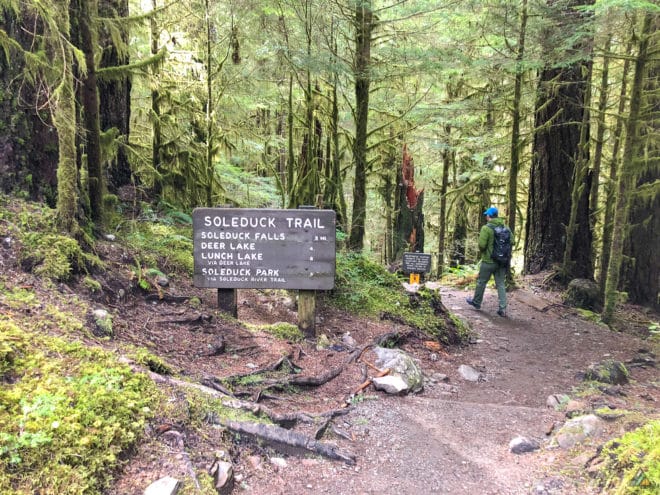
Take the Coho Ferry from Victoria Inner Harbour to Port Angeles, Washington, USA (90 min sailing). Advance reservations recommended. Cost $175 USD/return for vehicle and 2 passengers. Black Ball Ferry Line. Drive 1 h 11 min (42.6 miles) on Highway 101 and Sol Duc Hot Springs Road. Arrive at the Sol Duc Trailhead in Olympic National Park. Google Map
Permits Required
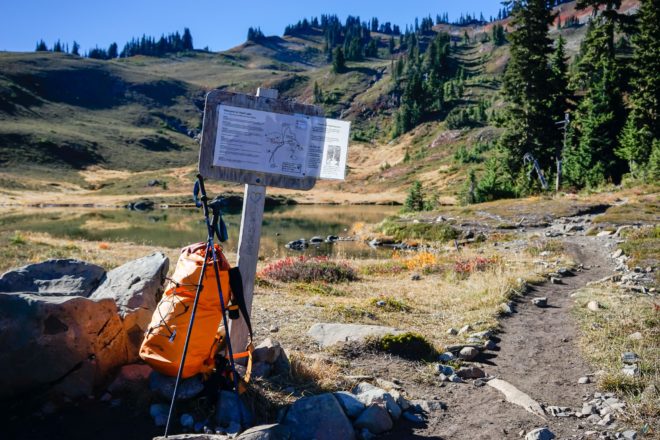
All overnight stays in the Olympic National Park wilderness require a permit year-round. Backcountry areas with quotas need reservations. Wilderness Camping Permit fees are $8 USD per night per person. Persons 15 years or younger are free. Olympic Annual Wilderness Passes are $45 USD per person. Wilderness Passes cover your fees, but permits plus or minus reservations are still required. We find the best place to get permits is the Port Angeles Wilderness Information Centre (WIC). This location is convenient for us after driving off the Coho Ferry from Victoria. WIC rangers can answer your questions about permits, food storage, weather, trail conditions, or wildlife.
Camping Options
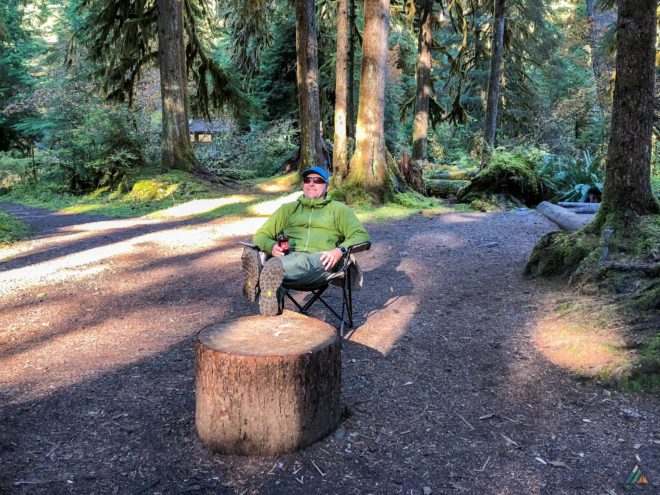
The Sol Duc Campground offers riverside camping in an old-growth rainforest. This camp is 1.4 miles (2.3 km) from the Sol Duc Trailhead and is run by the Sol Duc Hot Springs Resort. The campground has 82 tent sites (70 paved and 12 walk-in) and 17 RV sites with hookups. Reservations are available for 62 of the resort’s 82 tent sites and for all 17 of the resort’s RV campsites. The usual operating season is between May and October, but actual dates may vary. Flush toilets and running water. Primitive camping (no running water) is available during the off-season. Fee is $21 plus tax if a first-come-first-served site is captured; $24 plus tax if you reserve your site online. First-come-first-served sites can be paid via an envelope system and iron ranger fee collection box.
Trip Report
High Divide – Seven Lakes Basin Loop – October 20, 2018
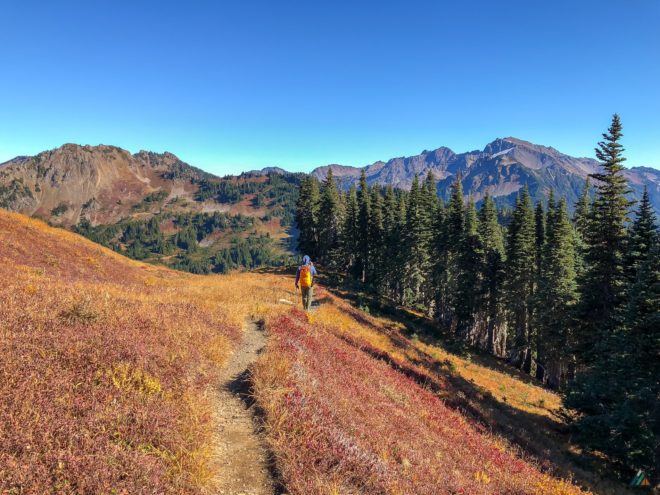
- Distance: 29.6 km (18.4 mi)
- Duration: 9 h 34 min
- Gain: 1396 m (4580 ft)
- Route: CalTopo
The High Divide – Seven Lakes Basin Loop, has been on our trip list for many years. On July long weekend, we planned to execute the loop as a multi-day backpacking trip. Unfortunately, environmental conditions were not favourable. Sol Duc Park was still blanketed in deep snow, and cold fog obscured our views. We had a good time as usual, but only made it to Heart Lake and the High Divide Trail for a quick peak. You can read about that exploratory trip in our Sol Duc River Trail post.
We found ourselves in Olympic National Park at the end of our Pacific Northwest National Parks road-trip. We camped by the ocean at Kakaloch Campground to discuss hiking options. The weather looked excellent and we were feeling good after a few weeks hiking at high altitudes. Mike suggested that we tackle the High Divide – Seven Lakes Basin Loop (29 km) as a big day-hike instead of waiting to complete it as a backpacking trip. I was up for the challenge. We would have small day packs and trail runners for footwear. The weather would be cool, dry, and sunny. We had some road-trip snacks to eat up. There was no reason not to go for it. We packed up and drove into the Sol Duc Valley.
At our Sol Duc Campground picnic table the night before, we mapped out a series of waypoints for the High Divide – Seven Lakes Basin Loop. Distances and elevations were calculated using the Green Trails Maps Seven Lakes Basin / Hoh River Trail / Mt Olympus Climbing No. 133S. The best waypoints to select from a paper map are non-ambiguous locations such as peaks, larger water bodies, trail junctions, or big structures such as bridges. Using backcountry campsite icons or unnamed creeks as planned waypoints can be problematic. Without a defining landmark to cross reference, some forest campsite areas span areas of several hundred meters. Unnamed creeks may disappear in dry conditions, or may look like other nearby creeks. Sometimes the actual waypoint coordinates, distances, and elevations differ when recorded with instruments in the field.
Sol Duc Trailhead to Deer Lake

We started hiking from the Sol Duc Trailhead in the dark at 0730 h. It was late October and 3 Cº (37 Fº). After arriving at the Sol Duc Falls bridge, we turned right onto the Deer Lake Trail and started our counter-clockwise attempt of the High Divide – Seven Lakes Basin Loop. The first section through old-growth forest was a steady uphill climb. Our bodies gradually warmed up. The light brightened from grey and we started to see the forest details. Sunlight eventually poked through the canopy and we started to shed layers of clothing. The trail was in excellent condition, with only a little mud to navigate. We saw lots of familiar vanilla leaf, now yellowing and decaying late in the season.
Deer Lake to Bogachiel Peak
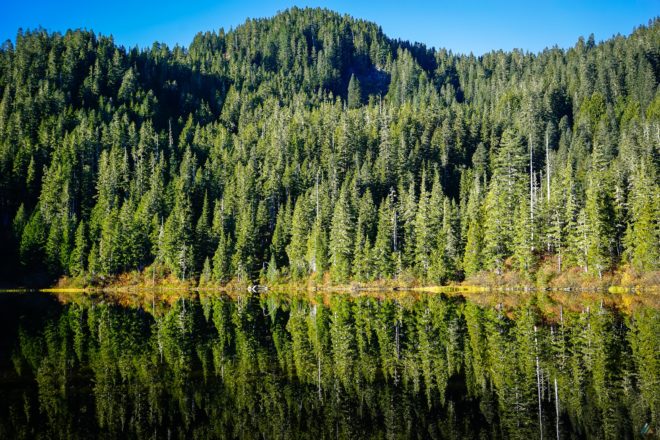
Deer Lake was our first major waypoint. We had a quick look around the camping zone and took a photo of the site map for future reference. An American dipper swam in the lake looking for bugs. The terrain transitioned to montane forest and open subalpine meadow. Now in full sunshine, we continuing climbing upward to our high point of the day: Bogachiel Peak. We were now on the High Divide Trail. Contouring the colourful ridges offered extensive views of the surrounding landscape. We encountered a few other hikers in this section. Some were runners doing the loop in a day, though much faster than us. One couple exclaimed how excellent the weather was, and how it could very well be the “last good weekend” before the rain and snow.
Bogachiel Peak to Heart Lake
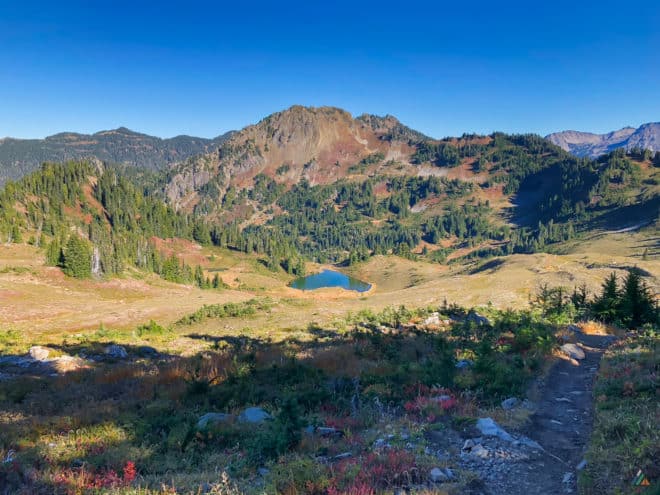
We passed the Lunch Lake Junction waypoint, and scrambled up to the summit of Bogachiel Peak for snacks. Our thermometer read 15 Cº (59 Fº)! Here we had our first good views of the Seven Lakes Basin below. Our supplies were down to crackers and peanut butter. We must have dropped a crumb or two, because after we left, a chipmunk scurried over to look for bits. The next section to Heart Lake felt longer and more strenuous than we anticipated. Looking south, we saw the Hoh River, Mount Olympus, the Blue Glacier, and the lateral moraine we visited seven weeks previously on our Hoh River Trail trip. The High Divide trail bumped along for several kilometres until its terminus in Sol Duc Park. The path that continued west was called the Cat Basin Primitive Trail. This route led into the Bailey Range and more technical terrain. We looked down upon familiar Heart Lake, this time clear of ice and snow. We turned north (left) down the Sol Duc River Trail which we had explored on Canada Day weekend. We stopped at Heart Lake and its outflow Bridge Creek for water. The High Divide Trail was very dry. We did not have any water opportunities between Deer Lake and Heart Lake. Bridge Creek eventually joins the Sol Duc River.
Heart Lake to Appleton Junction
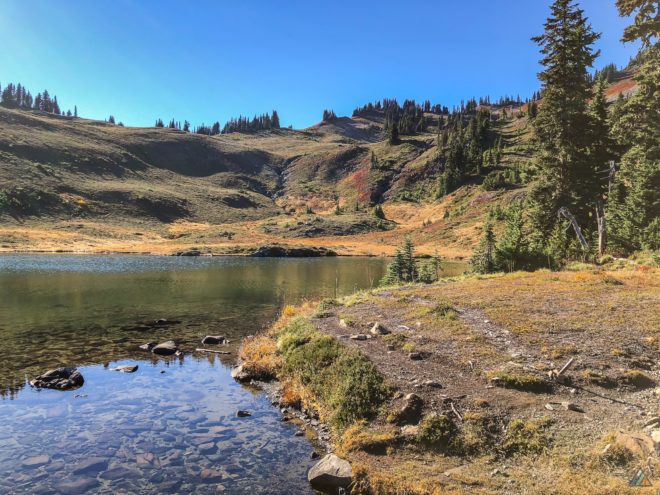
After a drinking about a litre of water each and filling our bottles again, we started our descent from Sol Duc Park. We were tired from the heat and a bit dehydrated, so looked forward to some shade and help from gravity. We passed by our Sol Duc Park Camp from earlier in the year. The trees became thicker and the air cooler. It was easier on the quads and knees to descend in trail runners and with light packs. We took our usual break at the Upper Sol Duc Bridge Camp with its excellent forest furniture. We crossed over the Sol Duc River and proceeded deeper into the forest, passing many deserted backcountry campsites: Horsehead Stock, Sevenmile Group, Rocky Creek, and Appleton Junction. Water was not a problem in this section.
Appleton Junction to Sol Duc Trailhead
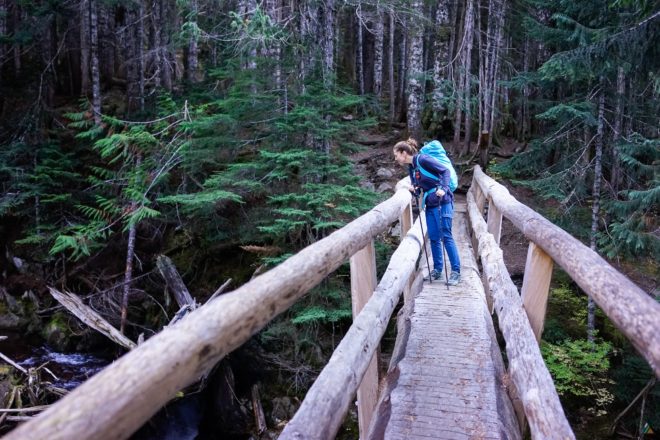
We took our last break at Appleton Junction with about 7 km more to go. The rest of the trail was a gradual downhill, but we were feeling the day’s effort. We passed a few more riverside camps, counting them down by name: Camp 3, Camp 2, Camp 1. Finally with relief and joy, we arrived once again at the Sol Duc Falls Bridge where we stood over 9 hours ago. The light was fading and the air cooling. The last kilometre felt long as our legs stiffened. A few day hikers appeared, fresh and energetic, on their late-day visits to Sol Duc Falls. We arrived at the Sol Duc Trailhead at 1736 h.
Completing the High Divide – Seven Lakes Basin Loop as a day-hike was extremely satisfying. While we did not have time to explore the basin zone, we took advantage of perfect fall conditions to make a full day. Olympic National Park never disappoints. Everyone we met out there was so delighted to have captured such a stellar day. After being home in Victoria for a few weeks, we looked across the Straight of Juan de Fuca towards Mount Olympus. Rain, snow, fog, and wind socked in the entire area. We were lucky to have enjoyed the Pacific Northwest’s “last good weekend” of 2018. Completing the High Divide – Seven Lakes Basin Loop re-inspired plans for a future backpacking trip into the Bailey Range. We talk about the Bailey Range every time we hike the Hoh River Trail and camp in its shadow. Hopefully, it won’t take us too long to complete that goal!
